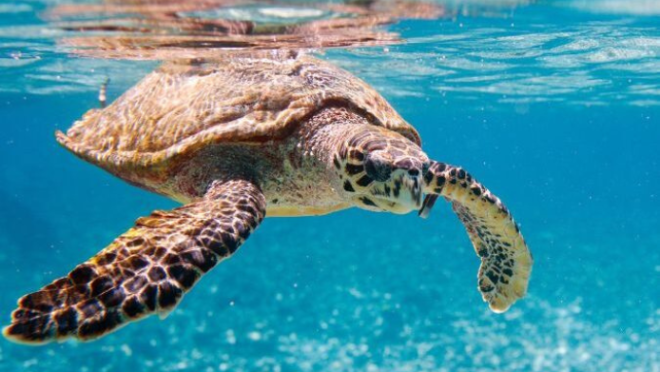World Aquatic Animal Day: Protecting our waters’ vital wildlife
World Aquatic Animal Day: Protecting our waters’ vital wildlife

Did you know that a report by the Ellen MacArthur Foundation estimates that by 2050, there could be more plastic in the water than fish by weight? This shocking prediction reveals the extent of human intervention isn’t just confined to land but also extends beneath the water.
Our seas, rivers, and lakes support countless species that maintain ecological balance, yet human activities are pushing many toward extinction. That’s why every year on April 3rd, World Aquatic Animal Day reminds us to take action now to protect marine and freshwater life before it’s too late.
Why aquatic animals matter
Aquatic animals, from tiny plankton to massive whales, play a vital role in sustaining life on Earth. Phytoplankton, for example, generate around 50% of the world’s oxygen, more than all the rainforests combined. Without them, breathing would become a lot more difficult.
Over 3 billion people rely on seafood as their primary source of protein, and the decline of fish populations threatens global food supplies. Fisheries and marine tourism also support millions of jobs and contribute billions to economies worldwide.
Predators like sharks and orcas help regulate marine populations, while coral reefs provide shelter for 25% of all marine species. Losing these creatures would have catastrophic effects, not just on marine life, but on humans as well.
Biggest threats to aquatic animals
Despite their importance, aquatic species face unprecedented dangers. Plastic pollution is one of the most pressing issues, with about 8 to 12 million tons of plastic entering the oceans each year. Sea turtles often mistake plastic bags for jellyfish, and whales have been found starved with stomachs full of trash.
Overfishing has wiped out approximately 90% of large ocean predators, including tuna and sharks, while illegal fishing and bycatch continue to exacerbate the problem. Climate change is another major threat, causing rising temperatures and ocean acidification that destroy marine habitats. Coral reefs are dying from bleaching, melting ice endangers polar species, and warmer waters force fish to migrate, disrupting entire food chains.
Additionally, coastal development, deep-sea mining, and pollution are wiping out critical ecosystems like mangroves and seagrass beds that serve as nurseries for countless marine species. On top of that, sonar activities and the constant noise from bustling city roots interfere with the wildlife’s communication and navigation, and contribute to habitat stress.
Local context: Bangladesh’s aquatic crisis
In Bangladesh, the challenges faced by aquatic animals are closely tied to both our environment and economy. The Sundarbans, home to endangered species like the Irrawaddy dolphin and Bengal tiger, is struggling with pollution from plastic waste and industrial runoff. Rising salinity, driven by climate change, is also affecting its delicate ecosystem.
The country has seen a significant loss in freshwater fish species, with 30 now extinct and 64 others endangered due to habitat destruction, pollution, and overfishing. Rapid urban growth and other factors have harmed aquatic ecosystems, putting native species at risk.
The situation for marine life is similarly concerning. In the Bay of Bengal, a 2011 study by the Wildlife Conservation Society (WCS) showed that one-third of the 1,700 Indo-Pacific bottlenose dolphins had injuries from fishing gear. Overfishing has severely affected tuna stocks in the Indian Ocean, which is a vital food source for dolphins and other marine creatures. Proposed industrial tuna fishing in Bangladesh could make matters worse.
What can be done?
The situation is certainly serious, but there are solutions. We need stronger policies, like expanding Marine Protected Areas to protect key habitats, banning single-use plastics, and enforcing stricter fishing limits. International agreements, such as the Global Ocean Treaty, must be backed to ensure global cooperation.
On an individual level, we can all help by choosing certified sustainable seafood, reducing plastic use, and supporting eco-friendly tourism. Conservation efforts like restoring coral reefs with artificial reefs, cleaning up ocean plastic, and rescuing endangered species are also essential. Many organizations are working hard to tackle these problems, but they need our support to make a real difference.
World Aquatic Animal Day isn’t just about awareness—it’s about action. The time to make a difference is now, for the sake of aquatic animals and the planet we all share.


